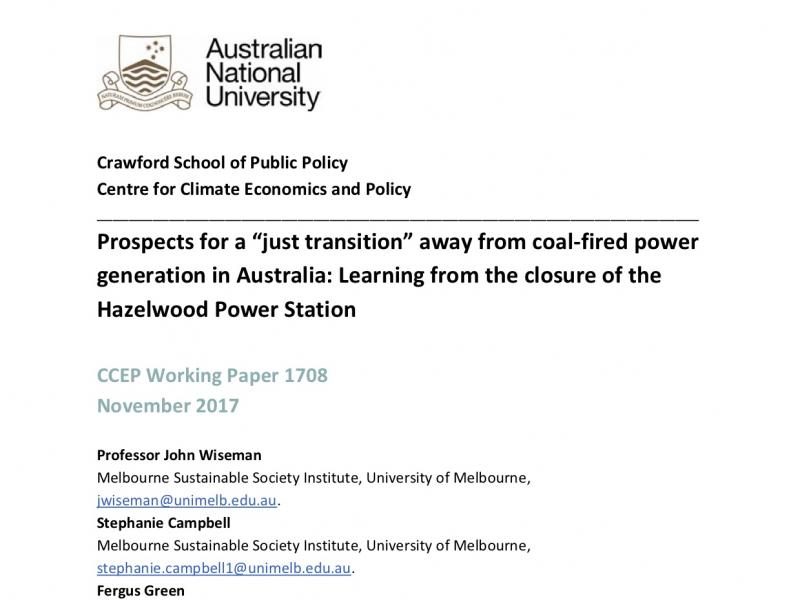Prospects for a “just transition” away from coal-fired power generation in Australia: Learning from the closure of the Hazelwood Power Station

Abstract
Until its relatively sudden closure in March 2017, the Hazelwood Power Station in Victoria’s Latrobe Valley was the most carbon-intensive electricity generator in Australia. It became a symbol of Australia’s reliance on coal and an electoral battleground in the bitter political struggles over climate policy that have raged since the mid-2000s. The announcement by Hazelwood’s owners, French multinational power company, Engie, in late 2016 that it would be closing the plant for commercial reasons, therefore came as somewhat of a shock. We argue that Australia’s political and economic institutions help to explain the autonomous decision of Engie to close the plant, the short notice period, and the lack of pre-closure government transition policy. These institutions discourage long-term policymaking and encourage a disproportionate amount of vote-seeking activity directed at marginal electorates. Straightforward “vote-seeking” is however too simplistic an explanation of the transition policies announced at the time of the Hazelwood closure. Of particular relevance is the fact that, over the last few years, the transition away from coal and towards renewable energy has become a virtual inevitability in the Australian energy sector. One important outcome of this trend has been the shift in position of the Australian union movement towards advocacy for “just transition” policies, bringing it both closer to—and, in some cases, in alliance with—environmental groups.
Absent institutional reform, the most likely means by which coal closures could move closer to “best practice” in Australia is through action by unions and environmental groups to mobilise institutional investors to pressure energy companies to adopt more worker- and community-friendly, “just transition” policies. The most plausible institutional reform path, given Australia’s existing political-economic institutions, would involve the direct regulation of companies’ transition obligations. Yet, the more interventionist the regulatory change, the greater the costs imposed on existing generators and the more politically contentious the reforms are likely to be. In this difficult policymaking environment, an important variable is likely to be the agency of civil society actors in making the politics of energy/climate policymaking more conducive to just transition-oriented regulatory reforms. Our case study has demonstrated that the positions of key civil society stakeholders in Australia’s energy debate, including unions, environment groups and to some extent business groups have been converging toward a “just”—or at least an orderly—transition as a dominant political narrative for substantive policies to improve the transition arrangements in the Australian energy sector. Strengthening and perhaps formalising these alliances will improve the incentives for political parties to invest in long-term policies in the energy sector.
Wiseman, J. Campbell, S. and Green, F. 2017 Prospects for a “just transition” away from coal-fired power generation in Australia: Learning from the closure of the Hazelwood Power Station, CCEP Working Paper 1708, Crawford School of Public Policy, Australian National University, November 2017


